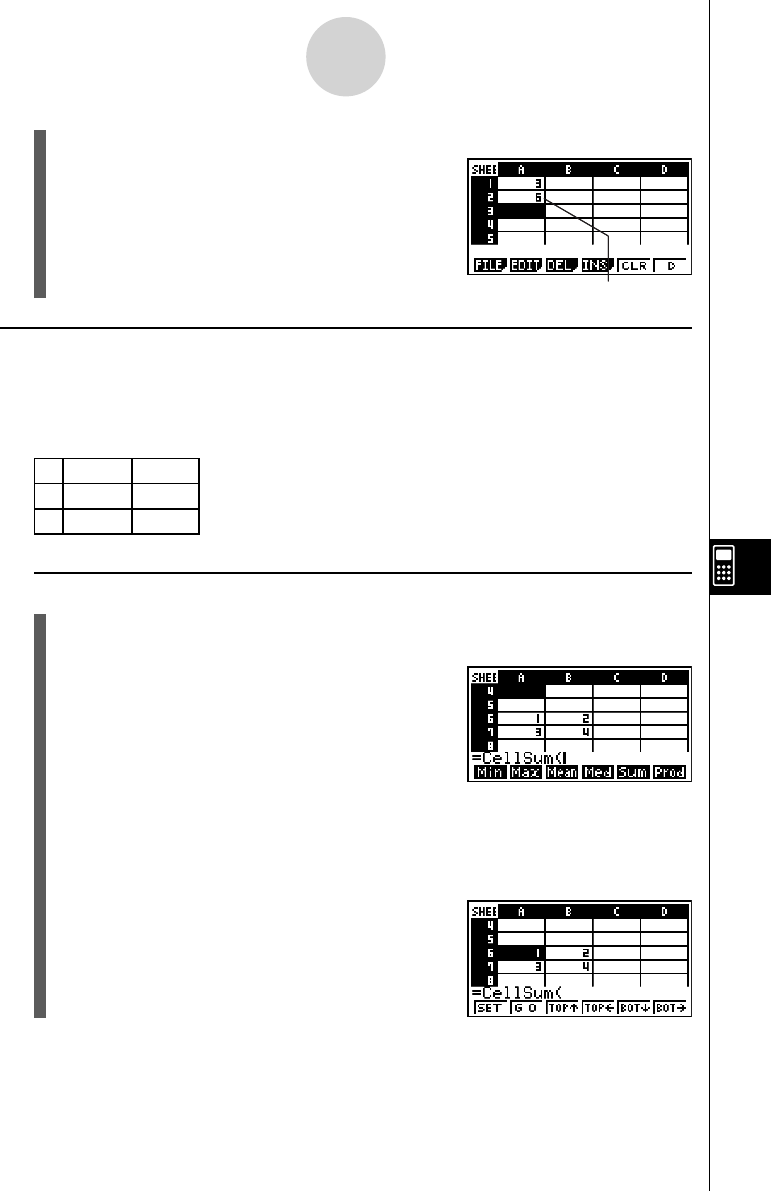User's Manual
Table Of Contents
- Quick-Start
- Precautions when Using this Product
- Contents
- Getting Acquainted— Read This First!
- Chapter 1 Basic Operation
- Chapter 2 Manual Calculations
- Chapter 3 List Function
- Chapter 4 Equation Calculations
- Chapter 5 Graphing
- 5-1 Sample Graphs
- 5-2 Controlling What Appears on a Graph Screen
- 5-3 Drawing a Graph
- 5-4 Storing a Graph in Picture Memory
- 5-5 Drawing Two Graphs on the Same Screen
- 5-6 Manual Graphing
- 5-7 Using Tables
- 5-8 Dynamic Graphing
- 5-9 Graphing a Recursion Formula
- 5-10 Changing the Appearance of a Graph
- 5-11 Function Analysis
- Chapter 6 Statistical Graphs and Calculations
- Chapter 7 Financial Calculation (TVM)
- Chapter 8 Programming
- Chapter 9 Spreadsheet
- Chapter 10 eActivity
- Chapter 11 System Settings Menu
- Chapter 12 Data Communications
- Appendix

20070201
9-4-7
Inputting and Editing Cell Data
5. Next, input *c .
6. Press w to store the formula.
Result of A1 × 2
k Referencing a Range of Cells
You can reference a range of cells to obtain their sum, mean, etc.
The following procedure input a formula to determine the sum of cells A6 through B7, and
inputs the result in cell A4. This procedure assumes that cells A6 through B7 already contain
the values shown below.
A B
6 1 2
7 3 4
u To reference a range of cells
1. Move the cell cursor to cell A4, and then input ! . (=).
2. Perform the following key operation to input the sum command.
5 (CEL)5 (Sum)
• “CellSum(’’ is a S
•
SHT mode command. See “9-5 S
•
SHT Mode Commands” for more
information.
3. Press J1 (GRAB).
• This enters the Grab mode.
4. Use the cursor keys to move the cell cursor to the
fi rst cell of the range you want to select (A6 in this
example).










